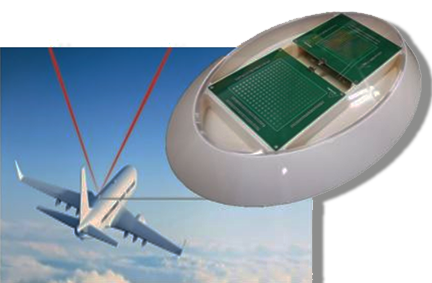
Arralis has rolled out their new Ka-band analog phase shifters that enable true, electronically steerable, low profile antennas to be offered to the commercial and defense aircraft markets.
Senior fleet operators, network providers and platform users at the recent APSAT Conference in Jakarta agreed that satellite antennas have been the weak point for satellite broadband. Until now, they blame a lack of innovation for ongoing issues with cost, size, poor aerodynamics, insufficient throughput and single satellite operation.

The Arralis compact, lightweight and aerodynamic Ka band phased array antennas, that need no stabilization requirements, are 400 percent smaller than their Ku-band counterparts and are made specifically with airliners, business jets, military aircraft and unmanned aerial vehicles in mind. The innovative antenna will open up the aircraft markets to high data rates and low latency satellite communications.
The HTS communications, of up to 2 Gbps, provide the wideband video streaming and full motion video capabilities that aviators have been waiting for. The capability is ideally suited to continuously track fast moving LEO satellites where the analog phase variation allows continuous electronic beam steering. Multiple simultaneous satellite tracking is possible.
This new product sits within Arralis’ family of versatile communications for space, aerospace, transportable and on-the-move applications. This antenna will be of great benefit to designers of aircraft as now a simple, reliable and flat beam steering and continuous tracking antenna can be realized.
According to Gary Soul, the Arralis VP of Business Development, at the Farnborough Airshow, the company is exhibiting the Kaband antenna and highlighting how the Arralis new monolithic microwave integrated circuit (MMIC) phase-shifters have enabled this innovative development, which allows users to continuously track and communicate with LEO satellites in a form that can be easily integrated onto aircraft.

